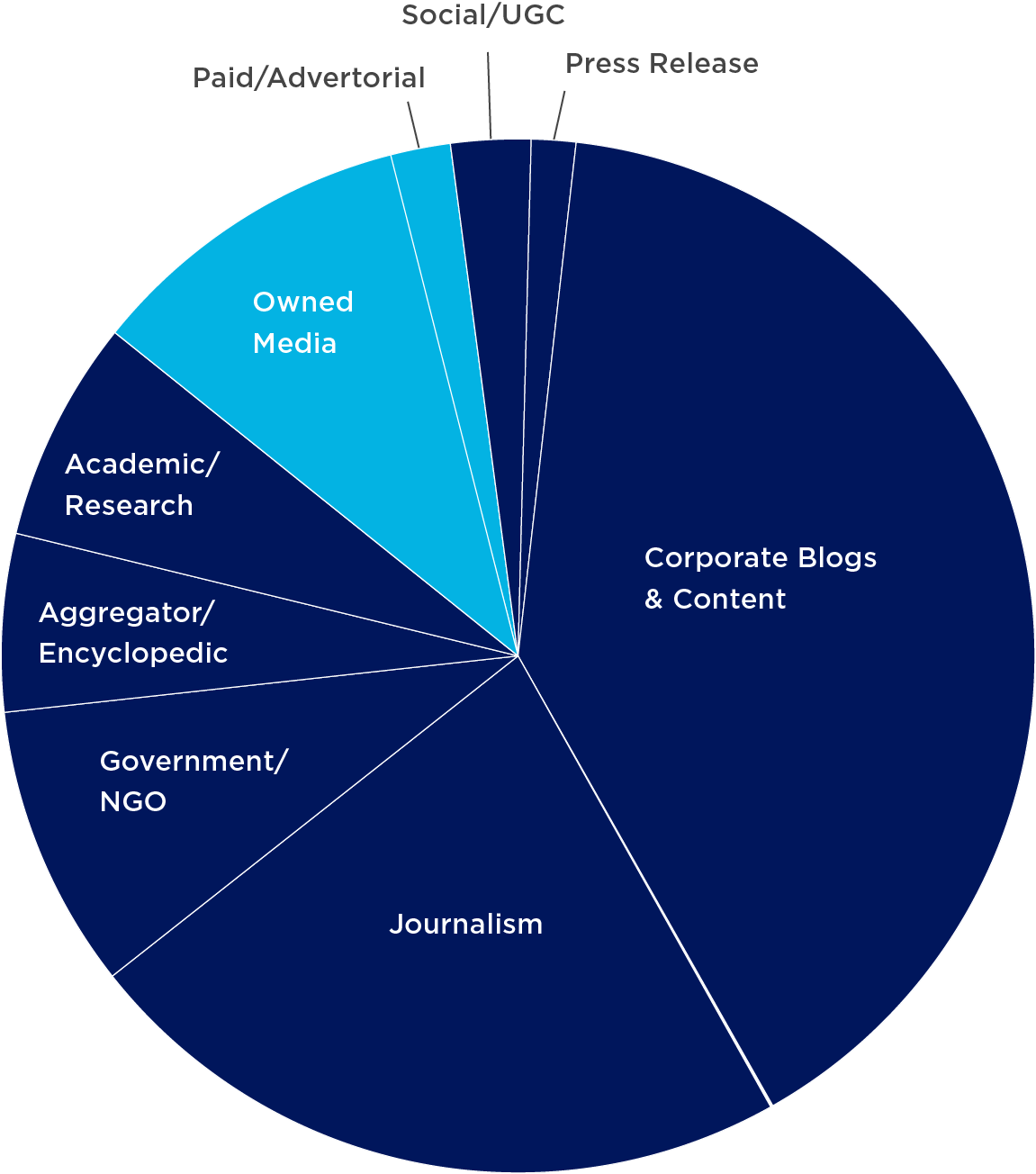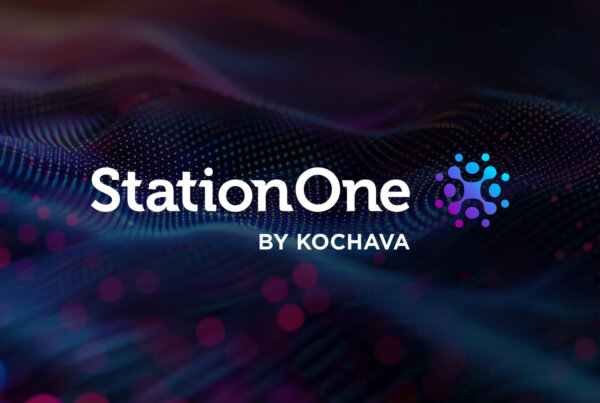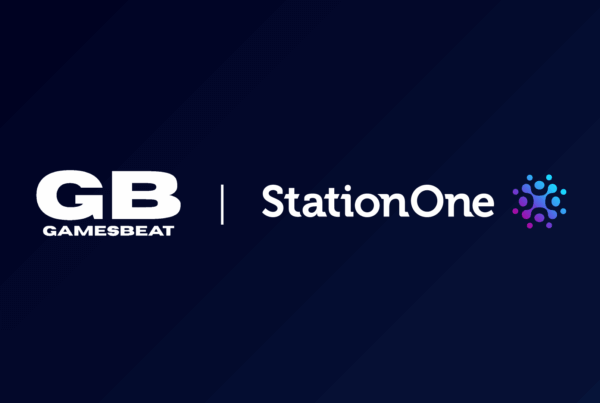How marketers adapt when searches increasingly end without a website visit
TL;DR Summary
More than half of searches now end without clicks when AI summaries appear at the top of results, causing traffic drops of 60–80% for many brands. Success requires mastering three new disciplines beyond SEO: making content AI-friendly (AIO), earning citations in AI answers (AEO), and building trust as an authoritative source (GEO). The winning strategy involves cross-functional team collaboration wherein PR secures earned media mentions, content is structured for AI consumption, and quality trumps keyword gaming. The zero-click era rewards genuine problem solving over shallow optimization tricks.
The traffic was there yesterday. You watched it flow through your carefully constructed funnel, each visitor a validation of time spent optimizing title tags and building backlinks. Then—slowly at first—the stream evaporated before reaching your site. Organic traffic down 60% year-over-year. Then 70%. Some brands reporting 80%. Not a technical glitch. Not seasonal fluctuation. Instead, the new normal.
Welcome to the zero-click era, where AI-powered search has fundamentally rewritten the rules of digital marketing. A person inputs a query, the answer appears atop the results—summarized, synthesized, and served up by AI—and the searcher moves on. Your carefully optimized content? Invisible somewhere below the fold.

In a recent webinar, Zero-Click Marketing: Winning in the Age of AI-Powered Search, a panel of marketing experts gathered to share hard-won insights from the trenches of this transformation. Their message was unmistakable: The playbook is being completely rewritten as we speak.
The Numbers Don’t Lie
The statistics paint a clear picture: One in five searches are now answered directly by AI. Click-through rates have plummeted 35% due to Google’s AI overviews. Sites appearing below these AI-generated summaries have suffered a 79% drop in organic traffic. And perhaps most telling: 65% of all Google searches now trigger the AI overview, and more than half of those that do end without a click.
Kevin Dulaney, EVP and Global Head of Innovation & Integrated Marketing at SourceCode Communications, has witnessed the carnage firsthand, revealing that some brands are losing the majority of their organic traffic.
“I’ve seen some brands dropping up to 80% of their organic traffic. It’s a huge paradigm shift—not just because of new search technology, but how we’re interacting with technology and the way we find information.”
The crisis extends beyond traffic metrics. Harvard Business Review reports that 95% of investments in generative AI have produced zero returns. Meanwhile, according to Cordial’s Intent Divide study, 47% of brands admit that they have no deliberate strategy for optimizing content for AI-powered search engines. Marketing teams are investigating, testing—and largely flailing.
What Content Survives?
Not all content faces equal risk in this new reality. AI excels at summarizing informational queries, news articles, and product reviews—the very content types that traditionally drove organic traffic. When someone searches “how to tie a tie” or “best budget smartphones,” AI synthesizes multiple sources into a comprehensive answer, eliminating the need to visit a single site.
But unmistakably human content—first-person stories, in-depth experiential insights, live event coverage—remains difficult for AI to tease out or replicate. Content wherein the value lies in the telling and not just the facts still drives clicks. The challenge is knowing which of your assets falls into which category.
“Search used to be about keywords, but now it’s more conversational,” Dulaney explains. “We’re searching for solutions, giving engines the context, and expecting AI engines to do research for us. You’re forming your site not just with your services and industries, but structured to solve problems.”
Decoding the Alphabet Soup: AIO, AEO, GEO
Traditional SEO focuses on keywords, backlinks, and page rankings. This foundation still matters. But marketers now face three additional layers demanding attention:
AI Optimization (AIO)
makes content easy for AI systems to process and reuse. This means token-efficient language, embedding relevance, and prompt-compatible phrasing. Think of AIO as making sure your content speaks AI’s native language.
Answer Engine Optimization (AEO)
focuses on capturing direct answers in search results—featured snippets, voice responses, AI overviews. It’s about becoming the cited source through Q&A structure, snippet-friendly formats, and clear alignment with user intent.
Generative Engine Optimization (GEO)
positions you as the source of record when AI models generate responses. This requires quality, well-researched content that’s structured, scannable, and cited by authoritative sources. GEO is reputation building—making your content trusted and reused by AI.
These AIO • AEO • GEO approaches lean heavily on Google’s E-E-A-T principles: Experience, Expertise, Authoritativeness, Trustworthiness.
But here’s the kicker: Best practices are constantly evolving. “Check not just from your perspective,” Dulaney advises. “Engines have memory. Have a friend check, use incognito, pull from different regions and roles to see if results are consistent.” What worked last month may already be obsolete. Testing theories, measuring engine output, and frequently adapting strategy is essential.
Breaking Down the Silos
Perhaps the most fundamental shift required is organizational. The zero-click challenge cannot be solved by any single team working in isolation.
“This is about not working in silos anymore,” emphasizes Leslie Amadio, Director of PR at Kochava. “The new playbook is working cross-functionally across the team to leverage content—earned and owned—that establishes trust and authority, amplifying it across social and paid channels.”
Earned media (e.g., press coverage, podcast appearances, third-party validation) has emerged as a critical trust signal in the AI era. When reputable publications cite your expertise, AI engines register your legitimacy as a source. The traditional PR approach of securing a placement, posting it on LinkedIn, and moving on no longer suffices.
“Earned media used to be the most effective way to improve organic SEO because it ranks high with Google’s E-E-A-T (Experience, Expertise, Authoritativeness, Trustworthiness) principles,” Amadio notes. “Now we break down that earned media placement into smaller parts, like carousel posts on LinkedIn, pulling bullets from the article, and linking back to the article to consistently establish and reinforce trust and authority.”
This extends to owned content—blog posts, whitepapers, and resources that companies create themselves. The shift required is tonal: “It’s no longer about marketing speak. Dial back that style, because people want real conversations, real language,” Amadio explains. Community-driven sites like Reddit rank highly in AI citations precisely because real people are discussing actual problems rather than regurgitating promotional copy.
The numbers bear this out. According to a July 2025 MuckRack report analyzing AI citation patterns, 95% of links cited by AI come from non-paid media sources. For earned media specifically—journalism, corporate blogs, government sources, research—the figure is 89%. For queries implying recency, nearly half of all AI citations come from journalism sources. Earned media isn’t just important for authority building—it’s the fuel AI engines run on.

For more on how PR functions as the new growth engine, SourceCode Communications explores AEO and the evolution of tech PR.
The cross-functional ethos becomes clearer when you map how each team contributes to AI optimization:
- AIO: Content teams ensure that language is AI-friendly, PR provides authoritative validation, and paid media ensures distribution and amplification.
- AEO: Content builds Q&A hubs, PR feeds storylines answering real questions, and paid drives traffic that helps AI test relevance.
- GEO: PR secures the trusted mentions, content contextualizes and interlinks them, and paid expands reach to reinforce authority signals in places AI pulls from.
Tool Trap
Desperation creates opportunity—for vendors at least. As organic traffic evaporates, marketers scrambling for solutions are a captive audience for tools promising silver bullets. Nicolas Drouet, Director of Revenue Operations at Kochava, surveyed 19 different vendors claiming to solve the zero-click challenge.
“Most tools have similar core functionality: visibility tracking, website monitoring, prompt analysis for different LLMs, and recommendations to improve your site,” Drouet reports. Competition among vendors is fierce, barriers to entry are low, and pricing models vary wildly, from month-to-month subscriptions to annual enterprise packages.
The biggest differentiator? User interface and experience. “There are lots of data, charts, and analytics, so you need a clean interface to really make sense of it,” Drouet notes. But no tool is a replacement for strategic clarity.
His recommendation cuts through vendor promises: “Take a look at your top-performing content and see how you can optimize it. Don’t rewrite everything; add schema, group information in digestible chunks, add FAQs, and make content easy for LLMs to pick up and cite.”
Website Paradox
Before we dive into tactical optimization, one fundamental question surfaces repeatedly: In an increasingly app-first world, do websites even matter anymore?
Dulaney’s response is unequivocal. “Websites are actually becoming more important, especially for app-first companies, because you need a place to build that authority. You have an audience you’ve already captured, and getting that first-party data and being that source of truth is what people are looking for.”
The fragmentation of digital touchpoints means that brands need more interactions, not fewer, to maintain mental availability. Websites serve as the owned foundation where you control messaging, capture data, and establish expertise—all increasingly valuable as AI mediates more of the customer journey.
Practical Path Forward: 5 Best Practices for AI-Powered Search
So what should marketers actually do? The webinar panel converged on several strategies that work right now—with the caveat that “right now” might mean something different in six weeks.
1. Understand the New Playing Field
Start by understanding the stakes. Google’s AI overviews now reach 1.5 billion monthly users, yet overlap with organic search results only 54% of the time. This means that half of AI citations come from entirely different sources than those ranking organically. And because 88% of AI overviews target informational queries, your top-of-funnel content faces the most scrutiny.
2. Make AI’s Job Easier
Success lies in reducing computational friction. Every time someone queries an AI, processing the answer costs money. Content requiring minimal computational effort—clean information architecture, logical progression, digestible sections—gets to jump the line. The technical term is token efficiency; the practical reality is that AI engines reward content that’s easy to parse and hard to misinterpret.
This means rethinking how you structure information. Rather than jam-packed paragraphs optimized for keyword density, organize content the way AI comprehends it:
- Clear hierarchies signal topic boundaries.
- Question-and-answer formats provide unambiguous structure.
- Bulleted information becomes instantly parseable.
When Dulaney describes ChatGPT’s new Pulse feature—which delivers overnight research summaries as brief cards—he emphasizes fitting answers into “50 words or less.” This constraint isn’t arbitrary, but informed by how AI systems package and present information.
Organization alone won’t earn citations. You have to tell AI what your content actually means, not just what it says. This is where structured data and schema markup—the metadata layer feeding AI comprehension—become essential. Pages employing schema or clear Q&A formatting see up to 70% higher inclusion rates in AI-driven results. You’re essentially providing a translation guide, helping AI understand context, relationships, and meaning.
3. Speak AI’s Language (and Your Audience’s)
Language matters as much as structure. Mirror how real people ask questions, not how marketing departments answer them. When someone searches “How to fix a leaky faucet,” they want that exact phrase in your content, not “Our comprehensive plumbing solutions.” LLMs favor natural, conversational phrasing over corporate jargon. Prompt-aligned copy can boost AI inclusion by roughly 20%, but more importantly, it makes your content useful to human searchers, which AI engines increasingly recognizes and rewards.
Recency has emerged as another critical factor. OpenAI now heavily weights content freshness after complaints about outdated information populating AI responses. Regular updates and consistent publishing cadence signal ongoing relevance. The evergreen content you wrote last year is aging poorly in AI’s eyes. Content decay happens faster in the zero-click era.
4. Amplify Across Channels
Beyond optimizing individual content pieces, amplification multiplies impact. When you earn media coverage, extract maximum value through systematic repurposing. Transform articles into social posts. Convert broadcast clips into paid video ads. Link repeatedly across channels. Each touchpoint reinforces the credibility markers AI engines track and weigh. It’s not about gaming the system, but rather ensuring that AI encounters consistent signals about your expertise across multiple trusted sources.
For insights on how PR drives this authority-building, see SourceCode’s perspective on PR as the new growth engine.
5. Measure What Matters Now
The measurement challenge acknowledges that traditional metrics tell incomplete stories. Traffic drops don’t necessarily mean strategy failure if you’re being cited as an authoritative source in AI-generated answers. Track where you appear in AI responses, not just search rankings. Monitor which content earns citations vs. ranks organically—they’re increasingly different lists. Visibility in answer engines represents a new form of branded awareness, one that doesn’t show up in click-through rates.
Success requires patience and iteration. Schema implementation and prompt alignment can show results within weeks. Authority building through earned media requires months. But everything shifts constantly. What works today needs adjustment next quarter. Test continuously, measure what matters, and stay willing to abandon strategies that worked brilliantly mere months ago.
The Path Through
But here’s the truth beneath the turbulence: The zero-click era isn’t a death knell for digital marketing. It’s a forcing function for better marketing. Shallow, keyword-stuffed content to game algorithms is exactly what deserves to disappear below AI summaries. Content that genuinely solves problems, demonstrates expertise, and serves audiences effectively retains its power.
Marketers who optimize for credibility rather than tricks, collaborate across teams rather than defend silos, and measure success by influence rather than clicks alone will thrive.

Want to dive deeper into the strategies and tactics discussed by the panel? Watch the complete on-demand webinar now. Discover how to structure content for AI consumption, build authority signals that matter, and measure success when traditional metrics vanish.
The rules have changed. The playbook continues to be written in real-time. The marketers who adapt fastest won’t just survive the zero-click era—they’ll define it.
Frequently Asked Questions on AI-Powered Search
What is zero-click search and why should I care?
Zero-click search occurs when AI-powered search engines answer queries directly at the top of results, eliminating the need for users to click through to websites. More than half of all searches triggering AI summaries now end this way, with brands reporting traffic drops of 60–80%. This matters because your carefully optimized content becomes invisible when AI summaries replace traditional organic results.
Success requires mastering three new disciplines:
- AI Optimization (AIO) for making content easy for AI systems to process
- Answer Engine Optimization (AEO) for earning citations in AI-generated answers
- Generative Engine Optimization (GEO) for building trust as an authoritative source that AI models reference when generating responses
Why does earned media matter so much more now, and how do I leverage PR placements for AI optimization?
Earned media has emerged as the dominant source of AI citations: 95% of links cited by AI come from non-paid sources, with 89% specifically from earned media such as journalism, corporate blogs, and research. For queries implying recency, nearly half of all AI citations come from journalism sources. The reason is trust—AI engines prioritize credible, third-party validated sources over promotional content when generating authoritative answers.
To maximize PR placements for AI optimization, break them into multiple formats: Transform articles into LinkedIn carousel posts, extract key insights for separate social content, create internal blog posts that link to coverage, and repurpose broadcast clips into paid video ads. Each touchpoint reinforces the credibility markers AI engines track and weigh. This ensures that AI encounters consistent signals about your expertise across multiple trusted sources, compounding your authority over time.
Should I stop investing in traditional SEO if AI is answering most queries without clicks?
Absolutely not—SEO remains the essential foundation. Think of these approaches as complementary layers: SEO ensures that your content gets indexed and ranks, AEO structures it for featured snippets, GEO positions it for AI citations, and AIO makes everything work together efficiently. The 54% overlap between organic rankings and AI overview citations indicates that traditional SEO still influences nearly half of AI-generated answers. More importantly, websites have become more critical—not less—as the owned foundation where you control messaging, capture first-party data, and establish expertise. All of these elements become increasingly valuable as AI mediates more of the customer journey. The zero-click era doesn’t eliminate the need for SEO; it demands that SEO works harder alongside new optimization disciplines.
What’s the first thing I should do to optimize for AI-powered search?
Start with quick wins like FAQ schema and prompt-aligned content that can show results within weeks, then layer in longer-term authority building through cross-functional PR and content collaboration that compounds over months.
Begin with your top-performing content and add schema markup to tell AI what your content means, not just what it says. Pages with schema or clear Q&A formatting see up to 70% higher inclusion rates in AI-driven results. Next, restructure content with clear hierarchies, Q&A sections, and bulleted information that AI can easily parse and extract. Audit your language to mirror how people actually ask questions—use natural phrasing like “How to fix X” rather than marketing language like “Our solution for X.” Prompt-aligned copy can boost AI inclusion by roughly 20%.
Meanwhile, build longer-term authority through earned media and cross-functional team collaboration between PR, content, and paid media teams. Don’t attempt to rewrite everything at once; optimize strategically, starting with content that already performs well and has the highest potential for AI citations.
How do I measure whether my AI optimization efforts are working?
Track where your content appears in AI-generated responses, not just traditional search rankings. Monitor which content earns citations vs. ranks organically—increasingly different lists. Key metrics include AI citation frequency (how often the content is referenced in AI answers), visibility in featured snippets and AI overviews, whether your brand is mentioned as an authoritative source, and specific queries triggering your content in AI responses. Traditional traffic metrics alone tell incomplete stories. Being cited as an authoritative source in AI answers represents a new form of branded awareness that doesn’t show up in click-through rates but signals genuine influence in how AI engines understand and present information in your domain.
AI optimization results vary by tactic: Schema markup and structured data can show improvements in AI citations within 2–4 weeks, while authority-building through earned media typically takes 3–6 months to influence generative engine outputs.





